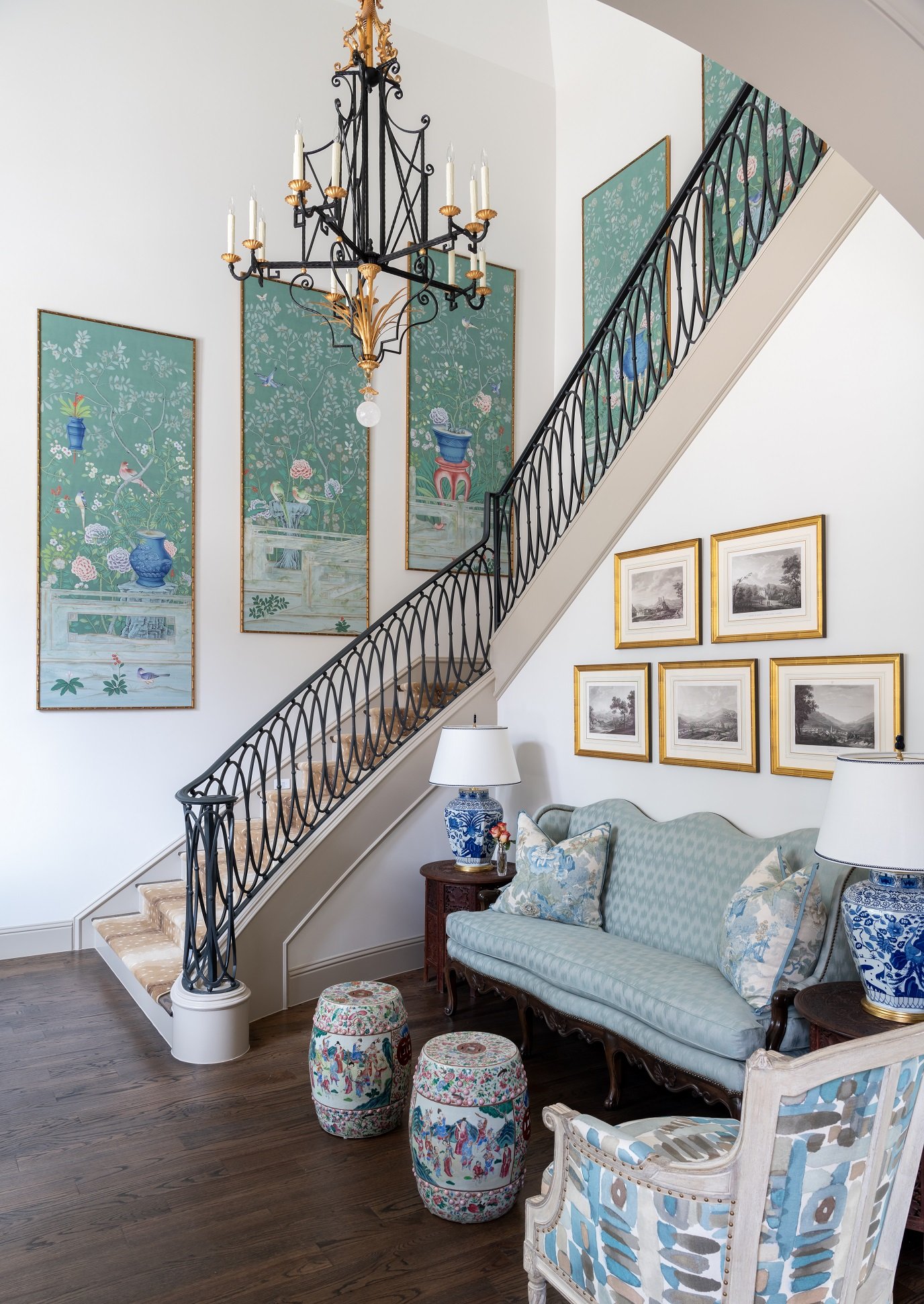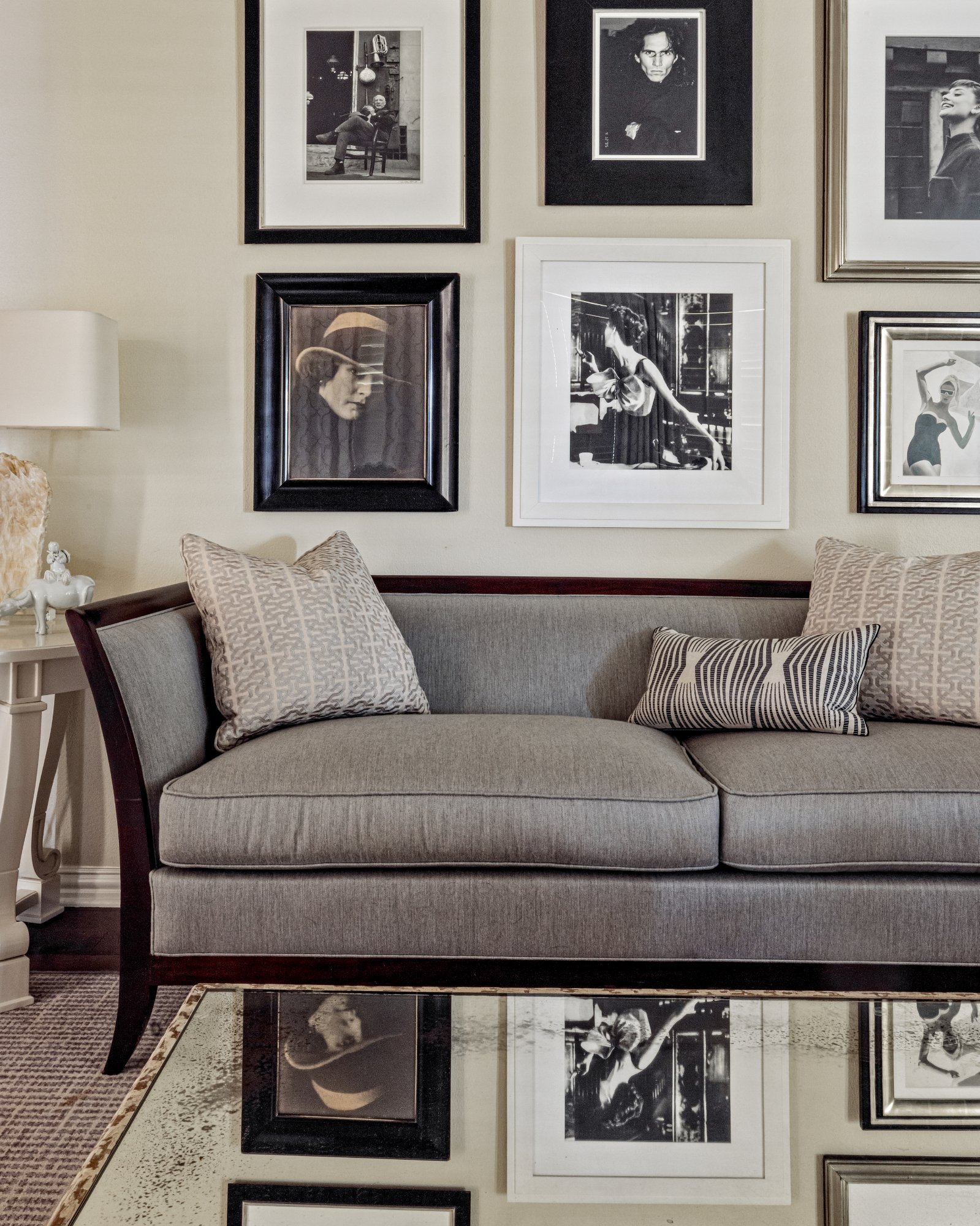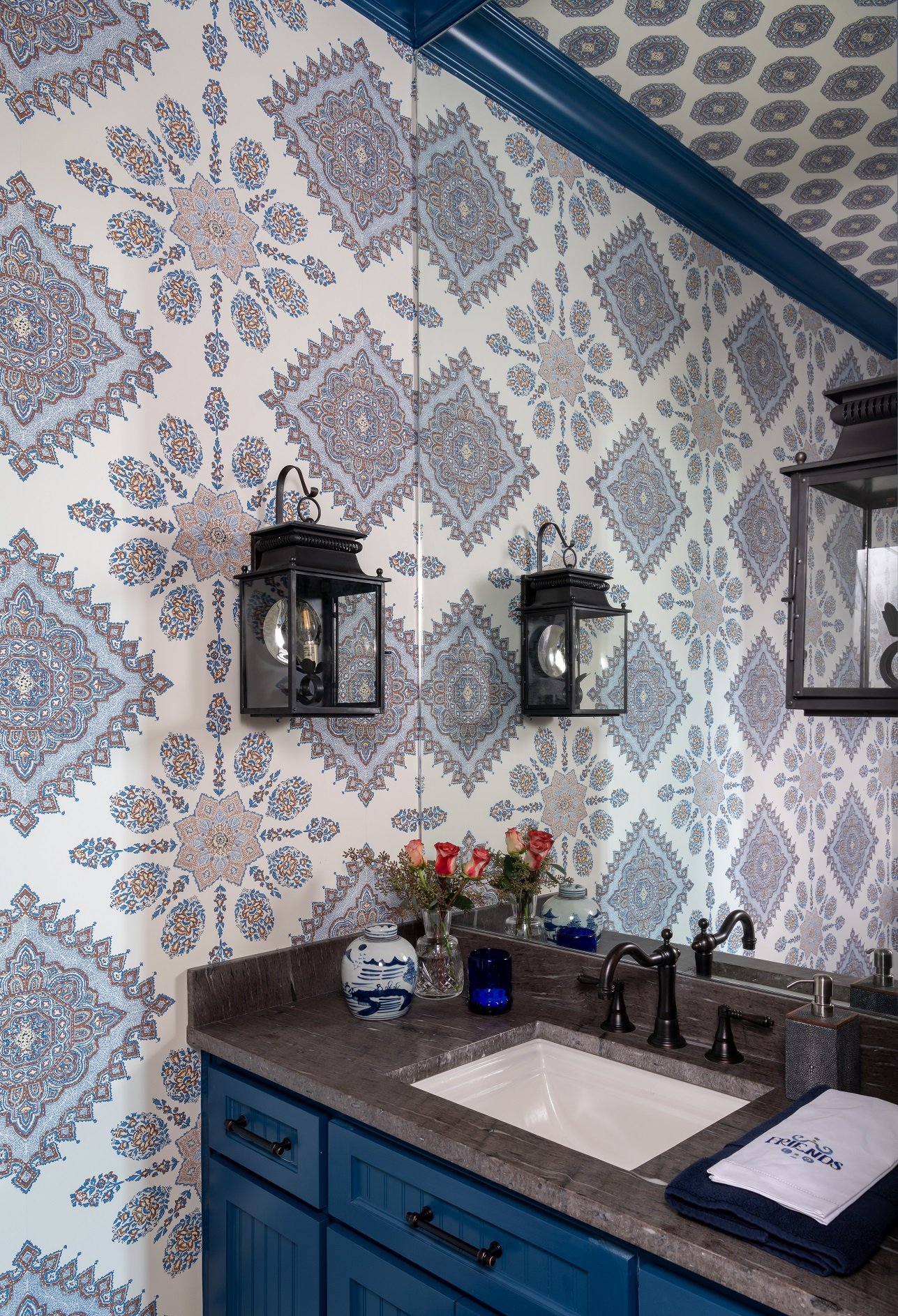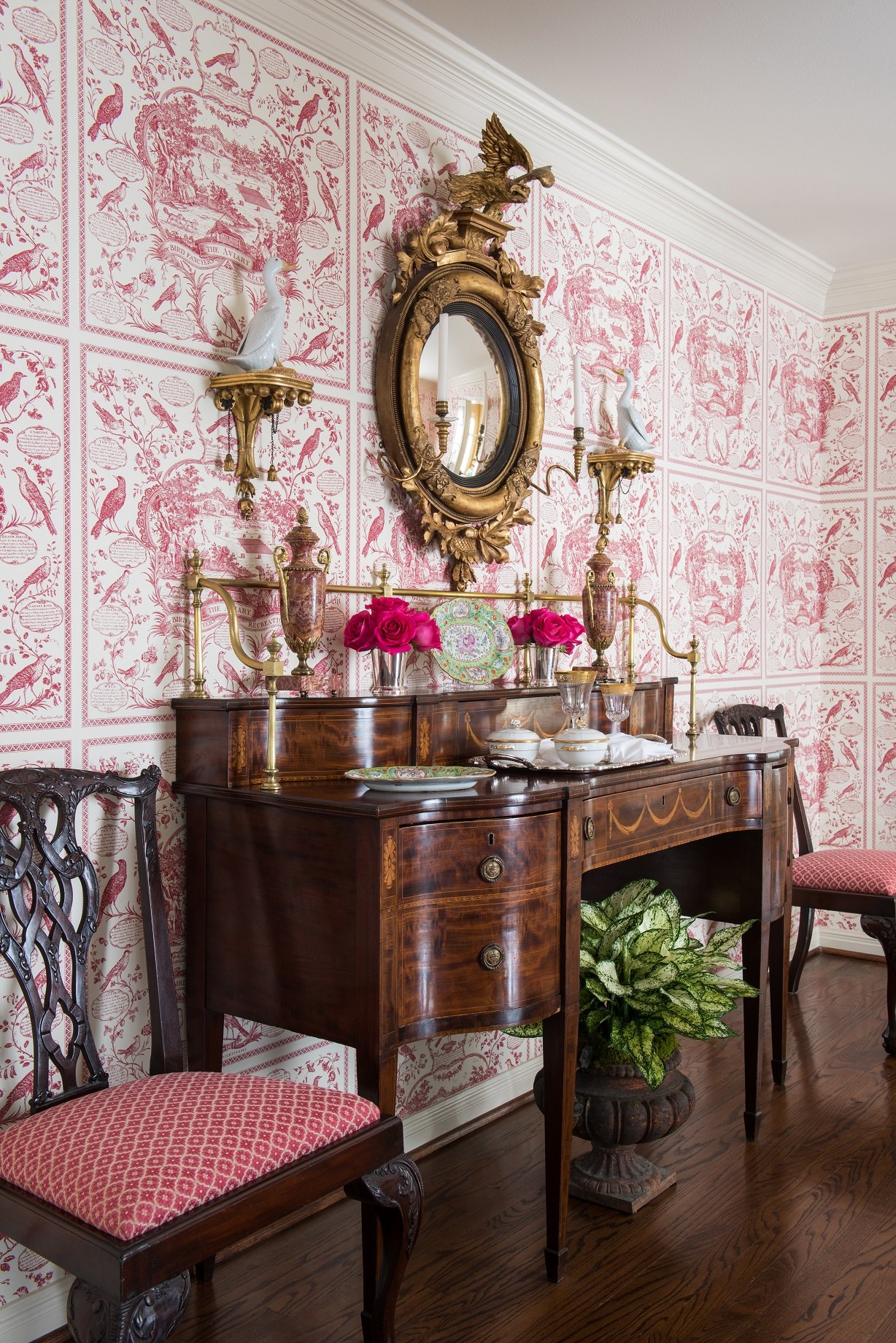When we frame and hang wallpaper panels, like these seen here, we don’t add glass in order to keep them lightweight.
Framing art is a project that people tend to put off because there are so many decisions involved. It’s not just the frame that you have to select: you also have to choose the right mat and decide whether you want glass, plexiglass, or no glass. As an interior designer, I love to work with clients who are art collectors. Here are some of the things I’ve learned while framing my clients’ art pieces.
Protecting Valuable or Personal Art
If you’re looking to reframe multiple art pieces, start by separating your most valuable pieces from the rest. These pieces should be framed using archival, museum-grade materials, such as an acid-free mat, a dust cover, and possibly a glass or plexiglass front.
We usually put non-glare, museum quality, UV-protected glass on fine art pieces. Textiles and watercolors are extra-sensitive to light and should be hung in shaded areas, even if they have UV-protected glass.
Use a Mat to Create a Neutral Backdrop
Most artwork looks better matted. The mat acts as a visual buffer between the artwork and the frame. By separating the art from the glass, it also creates a small space for airflow so that the glass and the art do not stick together.
These antique pen and ink drawings are framed in 22 karat gold.
Although mats can come in different colors, you almost always want to go with a white or off-white. Brightly colored mats tend to look dated. However, black or gray mats can be an appropriate choice for artwork that is already mostly white. For very small artworks, keep in mind that the smaller the artwork, the larger your mat should be. For prints or botanicals, I like to use French mats; a lot of the time, we also include a fillet of gold or silver on the inside, depending on what color the frame is.
Finding the Right Frame
Since professional framing can be expensive, it’s worthwhile to shop at antique stores for pretty frames to repurpose. When I’m helping a client, I like to give them high, medium, and low price points for frames. Prices vary a lot, and sometimes the framing can be almost as expensive as the art.
On the left is a 16th century Indian painting that was reproduced onto a tapestry. We mounted it in a custom acrylic shadowbox.
When it comes to framing, I want to highlight and complement the art rather than distract from it. For example, I would use an elaborate frame for traditional art, such as a portrait, and a simple frame for modern art. Sometimes people put mirrors in nice antique frames. I also love to frame textiles from Africa and India. With a textile, we will attach it to a linen backing and put a Lucite box around it. When framing large wallpaper panels, we like to use a very thin gold frame or a bamboo frame.
Seen here is a series of prints on handmade paper. We floated them in acrylic enclosures for this Dallas family room.
The Pros and Cons of Glass and Plexiglass
Museum grade glass was the standard option for a long time, but plexiglass has come a long way and is a solid choice. Plexiglass is lightweight, antistatic and scratch resistant. However, even scratch resistant varieties of plexiglass are easier to scratch than real glass. Plexiglass is great for collectors who move often: it’s easier to take with you from place to place and less likely to shatter if it’s dropped.
We always put glass on watercolor and prints, but we don’t put any glass on large wallpaper panels or oil paintings. Oil paint does not fade in the sunlight, so it doesn’t require the same protection as other mediums.
Rather than using all-matching frames for your gallery wall, try choosing frames that are different but complementary to each other, like the simple, monochromatic frames we chose for this gallery of black-and-white photos.
Although framing art can be intimidating, it’s a great opportunity to make your art look even more spectacular. By arming yourself with knowledge, you can approach a framer — or frame a piece yourself — with confidence.
For homeowners with large collections and little time, I would recommend contacting an interior designer. An interior designer like myself will not only know the best way to frame your pieces, but can also help you find where to put them in your home and hang them at the correct height. Our Dallas office can be reached by calling 214-651-7665 or sending an email to info@chambersinteriors.com.


















